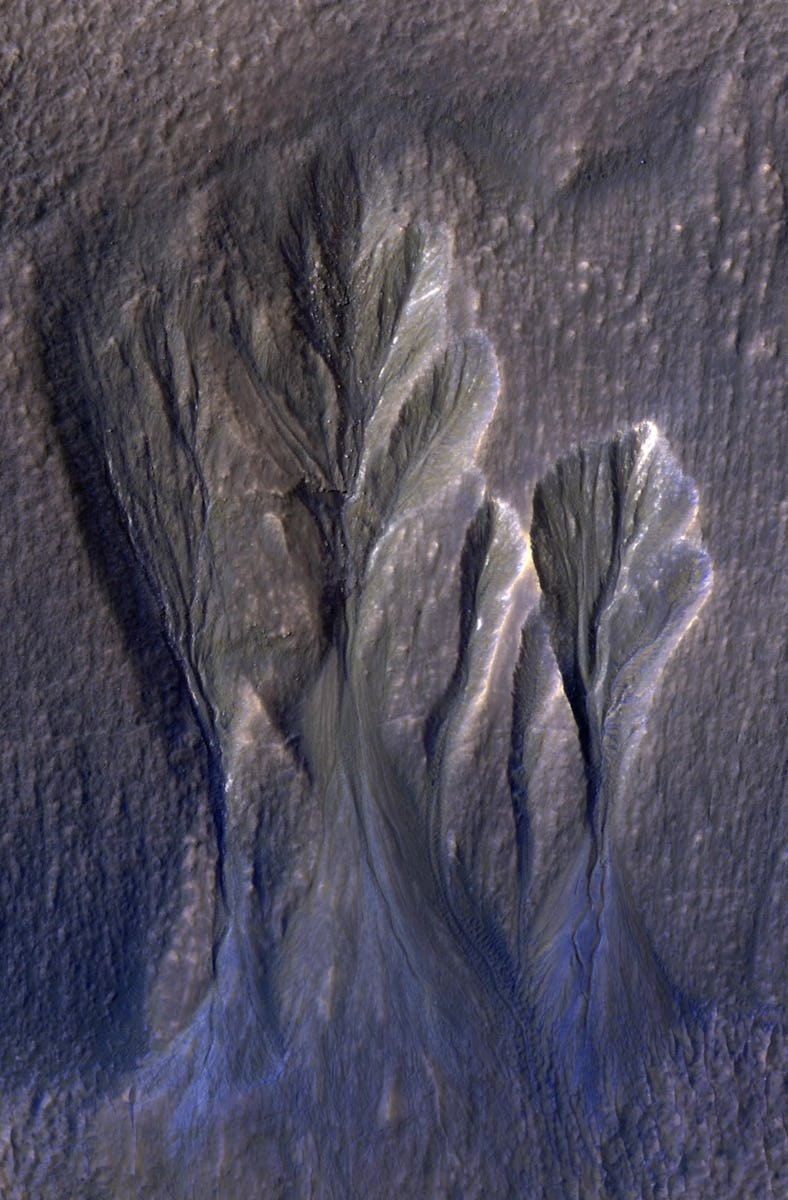Scientists Just Identified A Key Location On Mars Where Life Could Thrive
These pockets are little icy havens.

NASA is always searching for life on Mars, and on Thursday, the space agency announced one place it might thrive.
The announcement describes a new paper, published Thursday in the journal Nature Communications Earth & Environment, that suggests dusty ice could hollow out the frozen water enough for light to penetrate as far down as nine feet below the surface.
On Earth, dense snow and ice often melts from the inside out. When dust particles are embedded in the frozen water, they can create pockets. Sunlight then can act like a greenhouse, allowing photosynthesis to occur. Scientists think the same process could be happening on Mars.
Dust holes found in 2012 on Alaska’s Matanuska Glacier. Similar pockets could form on Mars, scientists think.
Shielded from the hostile Martian surface, but surrounded by liquid water and warmed by a greenhouse effect with the sunlight, these pockets could be havens for microbial life that perform photosynthesis.
When sunlight hits this ice-filled dust, the dust generates enough heat to melt the ice. As the meltwater seeps in, it carries the dust particles with it, creating these pockets. “The pockets can nourish a thriving ecosystem for simple lifeforms,” according to NASA.
Researchers think Terra Sirenum, a region located in the southern hemisphere of Mars, could host such conditions. Scientists suspect that the white edges along Terra Sirenum’s gullies might contain dusty ice.
“If we’re trying to find life anywhere in the universe today, Martian ice exposures are probably one of the most accessible places we should be looking,” Aditya Khuller, planetary researcher at NASA’s Jet Propulsion Laboratory in California and the study’s lead author, said in NASA’s announcement.
An enhanced-color image of Terra Sirenum on Mars. According to NASA, the white edges along these gullies could be dusty water ice.
Mars is missing key qualities that make Earth habitable. For one, Mars lacks a protective magnetic field to ward off cosmic rays and solar radiation. And although Mars has an atmosphere, it is thin. If frozen water on the planet’s surface is warmed, it doesn’t melt, but instead, turns directly into a gas, a phenomenon called sublimation. That’s why the dust in the ice is key.
If dust triggers ice to melt below the surface, it could remain liquid. And microbial life, if it exists on Mars, would have the upper ice to shield it from the harsh Martian bare landscape.
“Although liquid water at the surface of Mars is highly likely to evaporate,” according to the paper, “liquid water produced within snow can be stable against evaporation.”
Computer models reveal to the research team that enough sunlight could make its way into these underground ice pockets to promote photosynthesis. The team’s best guess about where on Mars these could be found are in the Red Planet’s tropics. That puts it more than 30 degrees latitude from the equator, but no farther than 60 degrees latitude.
On Earth, cryoconite holes are home to “a variety of organisms” like bacteria, green algae, fungi and diatoms, the paper authors added.
The next step would be to recreate Martian dusty ice in a laboratory. Looking beyond that, scientists could start mapping out the best places where this could be playing out. These locations could be stops or landing sites for future exploration missions.